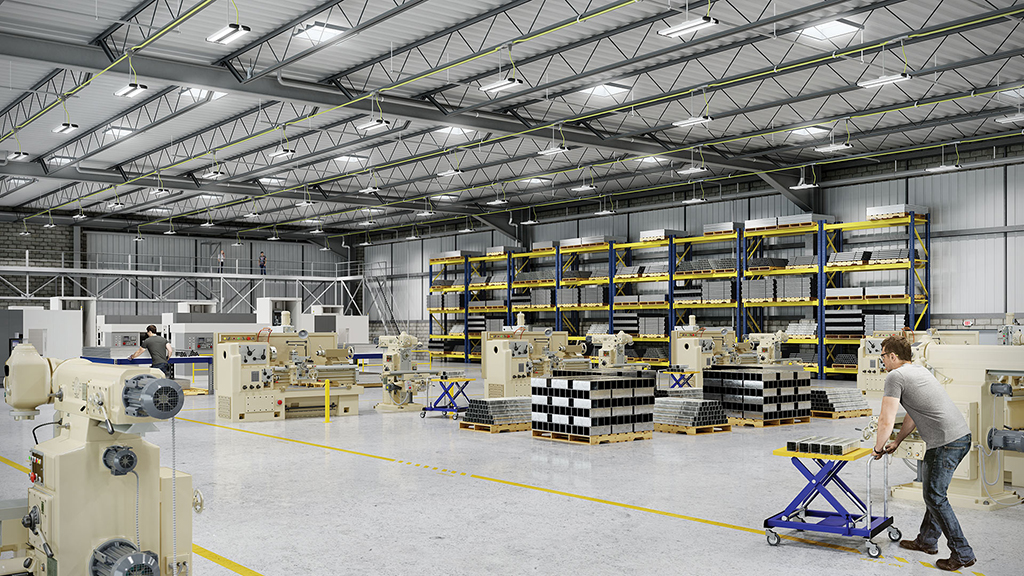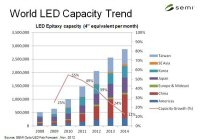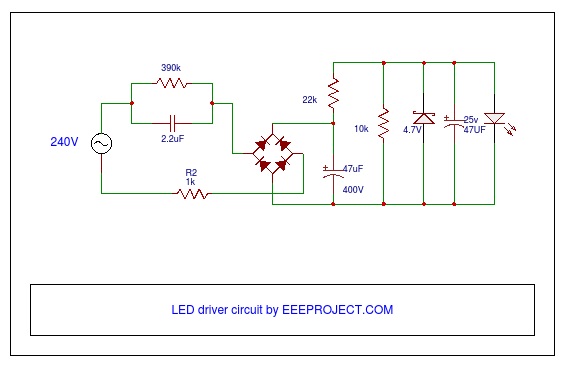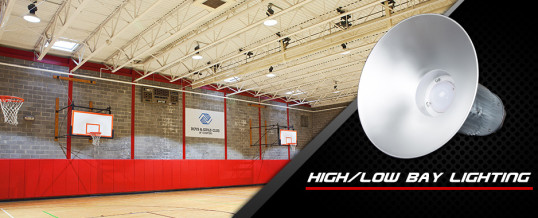
As readers of LED Journal you know that both interior and exterior conventional lighting is rapidly being replaced by LEDs with intelligent lighting management. End-users are reaping the myriad benefits of this technology in reduced energy consumption and costs, and the virtual elimination of lighting maintenance. These benefits provide an incentive to help vigorously drive the ongoing development and implementation of LED technology. However, when considering this technology, it’s important to assess factors that contribute to the lifetime of an LED luminaire.
Kenall's TekDek engineered with a systems-approach. Photo courtesy of Kenall Lighting
Given that the LED luminaire is a system, it is vital to recognize all aspects [of the system] and not just individual components that can affect or limit lifetime. Luminaire manufacturers are learning how to better account for the lifetime behavior of the many components that are used when designing an LED fixture, including drivers, optics, mechanical fixings and housings. Each of these is a factor in determining the lifetime of a luminaire. The primary factors in the lifetime of a LED luminaire are the LED source selection and the durability of the power electronics.
An effective, long-lasting luminaire design combines the most advanced LED sources, driver technologies, optics and form into each product. Let’s examine a few of these components to really get a feel for what engineers need to consider in designing an LED luminaire. The entire luminaire must be built to last for the lifetime of the application.
In the Lighting Industry Liaison Group’s 2011 Guidelines for Specification of LED Lighting, the following criteria provide excellent considerations when determining what factors should be considered for the length of an LED luminaire.
LED Source Selection – When selecting LEDs, it’s important to consider the color, color temperature (if selecting white LEDs), the viewing angle and CRI. But one of the most important factors is the application: what is the area to be illuminated – spot or area? Optics – diffuser, reflector, lens? Thermal density and heat removal? Size and lit appearance? Also, does the manufacturer’s LM-80 test data support the lumen depreciation requirement?
Power Electronics’ Durability – The electronics affects almost every performance aspect of an LED design. High quality components – not using electrolytic components when possible and not running at maximum capacity or temperature– help to ensure the luminaire’s reliability and lifetime.
Optical Performance – LEDs are directional light sources, giving the lamp or luminaire designer new challenges when compared to existing lamp technology. The use of reflectors, lenses and diffusers, or a combination thereof, allows a designer to direct light in many different ways. The efficiency of the optical system must be considered and factored into the overall efficiency value of the lamp or luminaire.
PCB – A PCB is the electrical carrier as well as the interface between the LED and heat-sink that carries with it a thermal resistance value. The higher the resistance, the less efficient the system is at wicking away heat from the LED, this may well impact the LED lumen output performance and, ultimately, the life, lumen maintenance and/or catastrophic failure of the LED.
Finish – The paint finish/color may affect the heat dissipation from the luminaire, but more importantly, plays a significant role in the long-term integrity of the luminaire enclosure. As the finish degrades, the base material of the enclosure may become susceptible to corrosion. Different applications require different levels of corrosion protection. Tunnel lighting, for instance, requires one of the highest levels of protection while indoor office lighting, the one of the lowest.
Mechanical – The mechanical integrity of a luminaire is important in several different areas, including: ingress protection ratings suited to the application, gasketing that will not become compromised with time and/or lack of maintenance, chemical compatibility with all materials used within the luminaire, UV resistance of polymeric materials when used outdoors and vibration resistance. While solid state lighting sources are inherently vibration resistant, that in itself is not enough to ensure the long term integrity of the remainder of the luminaire, in an application such as street lighting or parking structures, where constant vibration is commonplace.
Thermal Management – The performance of an LED is dependent on its temperature during operation. The design of the luminaire will influence its operating temperature. Heat management is a critical factor that affects LED luminaire performance and the LED lifetime.
Housing – LEDs allow new luminaire design freedom to lighting manufacturers and engineers. Innovative form factors not possible with incumbent lamp sources can be used both for styling and function. Even though it should be infrequent, design consideration should be given to the maintenance of the LED light source and all power electronics, because even the most well-designed luminaire will eventually no longer meet its expectation of light production.
All LED Luminaires are Not Created Equal – While it’s easy to get caught up in the LED revolution, it’s critical to understand the application as well as manufacturers’ luminaires’ designs. Does screwing in a replacement LED bulb provide the same quality illumination as a well-engineered, from-the-ground-up fixture? As we head into one of the industry’s largest tradeshows, LightFair, take the time to consider the system components I’ve briefly addressed above; these provide metrics for the quality and lifetime of an LED luminaire.



